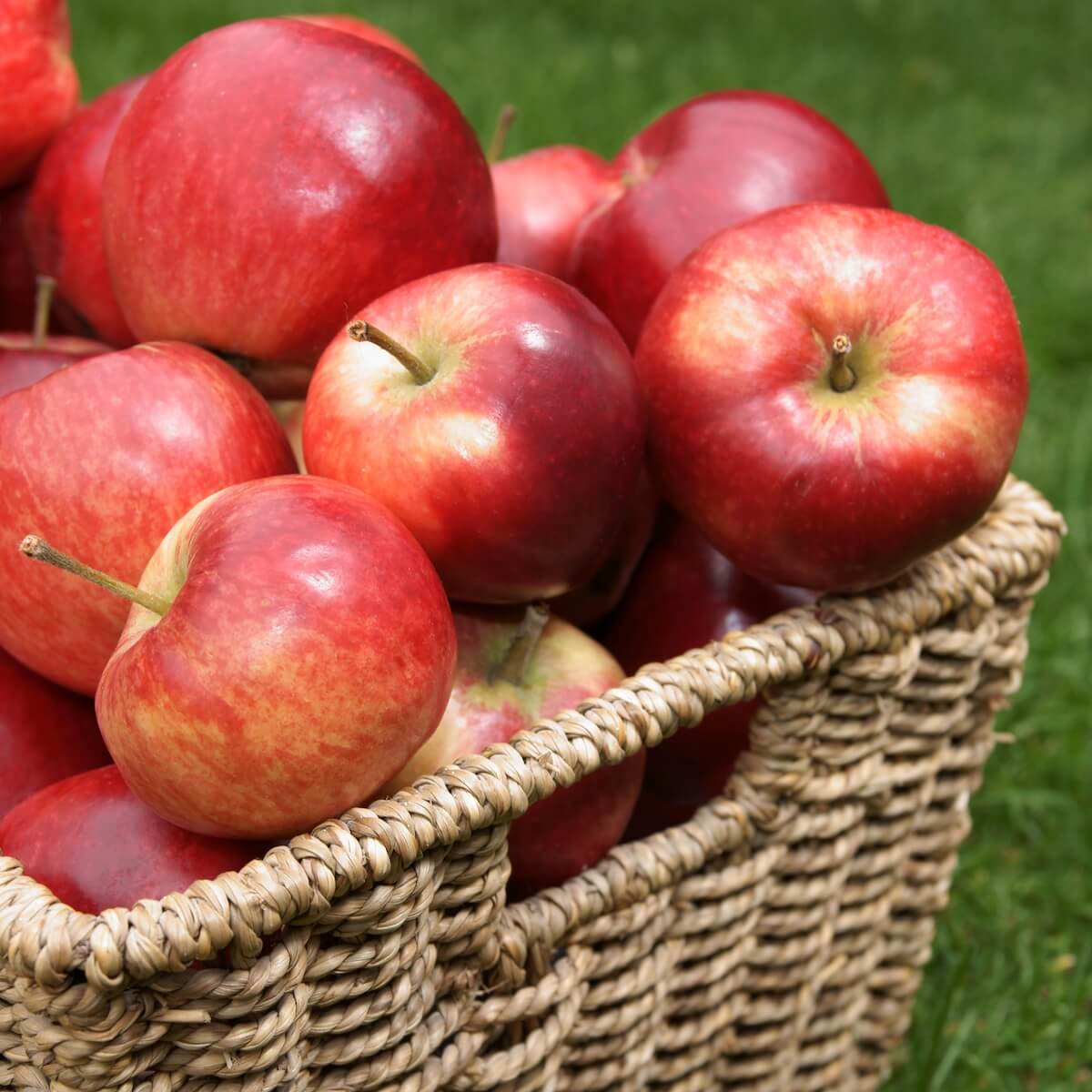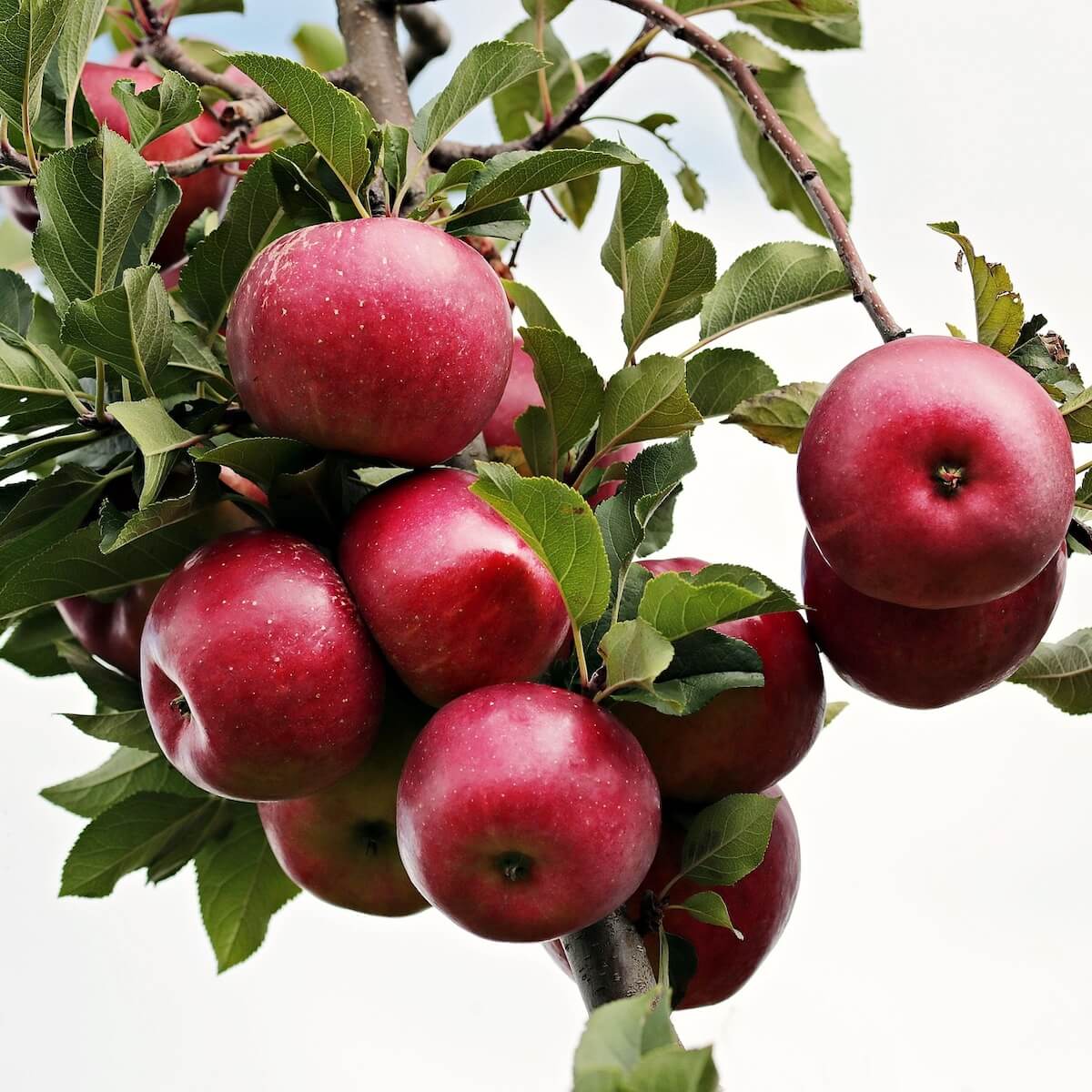
Position
- Requires a sunny, sheltered location for vigorous growth and full fruit ripening
- Avoid frost-prone areas, as late frosts can damage spring blossoms
- Prefers a south or west-facing position, protected from strong winds
Hardiness
- Hardy to temperatures as low as -15°C (5°F)
- Well-suited to most parts of the UK, withstanding typical winter conditions
Soil
- Grows best in moist, well-drained soils with good fertility
- Adapts to loam, clay, and sandy soils if enriched with organic matter
- Tolerates neutral to mildly acidic soil, but grows well in slightly alkaline soil as well
- Ideal soil pH range: 6.0 to 7.0 for best performance
- Grab a soil test kit and ensure the perfect conditions for growth
Height
- Typically grows to around 3–4.5 metres (10–15 feet) when grafted onto semi-dwarf or semi-vigorous rootstocks
- Height and spread can be managed with annual pruning
Seasons of Interest
- Flowering: Produces delicate pale pink blossoms in April, which attract pollinators to the garden
- Foliage: Deciduous with lush green leaves in spring and summer; leaves turn yellow in autumn for added interest
- Harvest the vibrant, red-flushed fruit from late August to early September for early-season apples
Additional Notes
- Pollination: Self-fertile but benefits from a nearby compatible pollinator (Group 3) for heavier crops
- Fruit Quality: Produces crisp, juicy apples with sweet, slightly tangy flesh; best eaten fresh, not a good keeper
- Maintenance: Requires regular watering during dry spells, particularly in the early years of establishment
- Pruning: Prune in winter to shape the tree and in summer to manage growth and improve light penetration
- Pest Resistance: Offers good resistance to scab and mildew, making it a low-maintenance variety
Discovery Apple Tree Care: Tips for a Healthy and Productive Harvest
Apple Discovery is a fantastic choice for gardeners looking for an easy-to-grow, early-season apple with a hint of strawberry flavour. This dessert apple has a rich history and remains one of the best early varieties. Whether you’re looking to buy trees or enjoy fresh fruit straight from the tree, the Discovery apple is a perfect addition to any garden.
What is Apple Discovery ?
The Discovery apple is a popular early apple variety known for its crisp texture, excellent flavour, and slightly acidic taste, making it a great choice for an early-season harvest. A fruit farm worker in Essex first found it in the late 1940s. This apple tree produces fruit with beautiful, dark red skin and juicy white flesh. Many adore Discovery apples for their refreshing, tangy flavour and early ripening season.
When Does the Discovery Apple Ripen?
Discovery apples ripen in late August, making them one of the first apple varieties to come into season. The fruit tree carries fruit in autumn, providing gardeners with an early eater fresh from the tree. Discovery apples are best eaten as soon as they ripen, as their flavour is at its peak.
How to Grow a Discovery Apple Tree
Growing Apple Discovery is easy, even for beginners. These trees thrive in well-drained soil and prefer a sunny location. Proper tree planting includes adding organic matter and using a tree tie to support young trees. The tree also means enjoying the apples straight from your front garden.

Choosing the Right Rootstock
Most Discovery apple trees are grown on MM106 rootstock, which makes them a good choice for home gardens. This rootstock ensures a moderately sized tree that produces a lot of fruit without taking up too much space.
Pollination and Companion Trees
The Discovery apple tree belongs to pollination group 3, which benefits from having another apple tree nearby for cross-pollination. Consider Discovery alongside varieties like Worcester Pearmain or Beauty of Bath to improve fruit production. For more guidance on pollination groups and compatible varieties, please look at my Apple Pollination Guide.
Common Issues and Care
Where to Buy Discovery Apple Trees
If you’re looking to buy trees, Discovery apple trees are often available as bare-root or container-grown plants, making them an easy-to-grow choice for your garden. Many nurseries offer trees for sale online, making it easy to get Discovery apples growing in your garden.
Enjoying Discovery Apples
Discovery apples are excellent for fresh eating and make fantastic apple jelly. Their slightly acidic apple flavour makes them suitable for many culinary uses. Occasionally, I buy Discovery apples from supermarkets, but nothing compares to the taste of those grown at home.
From Darren’s Patch
While I don’t currently grow a Discovery apple tree myself, I’ve tasted plenty over the years—and I can see why so many gardeners swear by it. The flavour is refreshingly crisp with a hint of strawberry, and it’s one of the earliest apples to ripen, which makes it a real treat in late summer. Discovery ticks all the boxes if you’re after an easy-to-grow variety with reliable crops and a manageable size. I often recommend it to new gardeners or anyone looking to extend their apple season with something different. Whether eating them fresh or turning them into apple sauce, Discovery apples deliver that classic English orchard taste.
![]()
Key Points to Remember:
- Discovery apple is a popular early-season apple with a tangy, juicy flavour
- The tree produces dark red apples with white flesh and ripens in late August
- It grows well in well-drained soil with organic matter and a sunny spot
- MM106 rootstock ensures a manageable tree size
- Pollination group 3 means it benefits from another apple tree nearby
- Good disease resistance, though occasional scab or canker may occur
- Available as bare-root or container-grown trees for sale online
- Best eaten fresh, but also great for apple jelly
This reliable, early-cropping apple is perfect for UK gardeners. Consider Discovery for your next fruit tree – it’s one of the best early apples you can grow!
To see the RHS article, please click here.
Want to learn about other apple varieties? Read about Apple Cox’s Orange Pippin here.
For more information on Fruit for your garden, please click here.
Frequently Asked Questions
Q: What is the Discovery Apple, and why is it special?
A: The Discovery apple is a popular early cooking variety perfect for various recipes. Malus domestica Discovery is prized for its sweet, slightly acidic flavour. Often called a true English apple, it’s a firm favourite for eating fresh and cooking.
Q: How do I grow Discovery apple trees?
A: Growing Discovery apple trees is straightforward. They thrive in well-drained soil and need a sunny position to produce the best fruit. When planting, dig a generous hole and mix in some well-rotted compost to help establish strong roots.
Q: When can I expect to harvest my Discovery apples?
A: If you’ve planted an early-season Discovery apple tree, you can typically start harvesting around late summer to early autumn. It’s always exciting to see those crisp apples ready to pick!
Q: Can I find Discovery apple trees in a tree register?
A: Discovery apple trees are listed in tree registers for commercial apple varieties, confirming their status as real English apples. Checking a register can help you find reliable sources for purchasing quality trees.
Q: What makes Discovery apples great for cooking?
A: Discovery apples are excellent for cooking as they hold their shape well and have a beautifully balanced flavour. Their slightly acidic taste makes them perfect for apple jelly, pies, and other delicious recipes.
Q: Are there any special care tips for my Discovery apple tree?
A: Absolutely! Regular pruning will help maintain a healthy shape and encourage fruit production. Keep your tree well-watered during dry spells, and check for pests or diseases to ensure a strong, thriving crop.
Q: Can I grow Discovery apples in containers?
A: Yes! Discovery apple trees, particularly half-standard varieties, grow well in containers. Could you ensure the pot has good drainage and provides enough space for root development?
Q: How can I tell if my Discovery apples are ripe?
A: Ripe Discovery apples will develop a beautiful yellow-green background with a red flush and feel slightly soft. Give them a gentle twist—if they come away easily, they’re ready to enjoy!
Q: Are there any diseases I should watch for with Discovery apple trees?
A: Like all apple trees, Discovery can be affected by diseases such as apple scab and powdery mildew. Good care practices, including pruning for airflow and removing fallen leaves, can help prevent these problems.
Q: Where can I buy a Discovery apple tree?
A: Discovery apple trees are available at garden centres and online retailers. Please choose a healthy, well-grown tree that suits your garden space.
